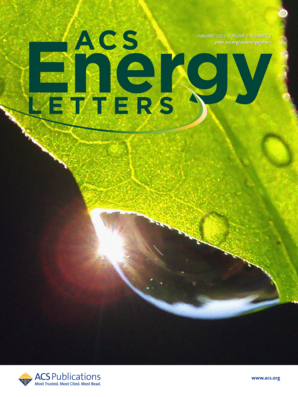Integrated Monomer Synthesis and Framework Assembly: Achieving Isoreticular Modulation of Hydrogen-Bonded Organic Frameworks
IF 19.3
1区 材料科学
Q1 CHEMISTRY, PHYSICAL
引用次数: 0
Abstract
Systematic construction of isoreticular hydrogen-bonded organic frameworks (HOFs) promises tailored material properties crucial for diverse applications, yet is challenging due to the weak, flexible, and non-directional nature of hydrogen bonds. Herein, we develop an “integrated monomer synthesis-framework assembly” (ISA) methodology for constructing a series of isoreticular HOFs. Unlike traditional methods where monomers are first synthesized and then assembled into HOFs, the ISA system employs dicyandiamide rigid hydrogen-bonded hexameric clusters as connecting nodes to covalently react with planarized C3-symmetric cyano-precursors (C3-CPs) to generate diaminotriazine (DAT) monomers, while simultaneously inducing the directional assembly into isoreticular (6,3)-net hcb topological DAT-C6-HOFs. The pore sizes and microenvironments of the resulting DAT-C6-HOFs can be precisely tuned by varying the structural modulation (length and steric hindrance) of the π-bridge on C3-CPs, enabling highly selective sensing towards perfluorooctanoic acid over other homologous molecules, that are difficult to be separated and detected by chromatography. Overall, the ISA methodology facilitates the scalable creation of families of isostructural HOFs and provides a customized structural platform for investigating factors beyond topology that impact the capturing, releasing, and responding to guest molecules.单体合成与框架组装一体化:实现氢键有机框架的等轴调制
系统构建等理论氢键有机框架(HOFs)有望获得对各种应用至关重要的定制材料特性,但由于氢键的弱性、柔性和非定向性,这种构建具有挑战性。在此,我们开发了一种 "单体合成-框架组装一体化"(ISA)方法,用于构建一系列等核 HOF。与先合成单体然后再组装成 HOF 的传统方法不同,ISA 系统采用双氰胺刚性氢键六聚体作为连接节点,与平面化的 C3 对称氰基前体(C3-CPs)发生共价反应,生成二氨基三嗪(DAT)单体,同时诱导定向组装成等核(6,3)-net hcb 拓扑 DAT-C6-HOF。通过改变 C3-CPs 上 π 桥的结构调制(长度和立体阻碍),可以精确调整所产生的 DAT-C6-HOFs 的孔径和微环境,从而实现对全氟辛酸的高选择性传感,而不是其他难以通过色谱法分离和检测的同源分子。总之,ISA 方法有助于可扩展地创建等结构 HOFs 家族,并为研究拓扑结构以外影响客体分子捕获、释放和响应的因素提供了一个定制的结构平台。
本文章由计算机程序翻译,如有差异,请以英文原文为准。
求助全文
约1分钟内获得全文
求助全文
来源期刊

ACS Energy Letters
Energy-Renewable Energy, Sustainability and the Environment
CiteScore
31.20
自引率
5.00%
发文量
469
审稿时长
1 months
期刊介绍:
ACS Energy Letters is a monthly journal that publishes papers reporting new scientific advances in energy research. The journal focuses on topics that are of interest to scientists working in the fundamental and applied sciences. Rapid publication is a central criterion for acceptance, and the journal is known for its quick publication times, with an average of 4-6 weeks from submission to web publication in As Soon As Publishable format.
ACS Energy Letters is ranked as the number one journal in the Web of Science Electrochemistry category. It also ranks within the top 10 journals for Physical Chemistry, Energy & Fuels, and Nanoscience & Nanotechnology.
The journal offers several types of articles, including Letters, Energy Express, Perspectives, Reviews, Editorials, Viewpoints and Energy Focus. Additionally, authors have the option to submit videos that summarize or support the information presented in a Perspective or Review article, which can be highlighted on the journal's website. ACS Energy Letters is abstracted and indexed in Chemical Abstracts Service/SciFinder, EBSCO-summon, PubMed, Web of Science, Scopus and Portico.
 求助内容:
求助内容: 应助结果提醒方式:
应助结果提醒方式:


